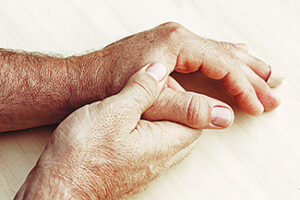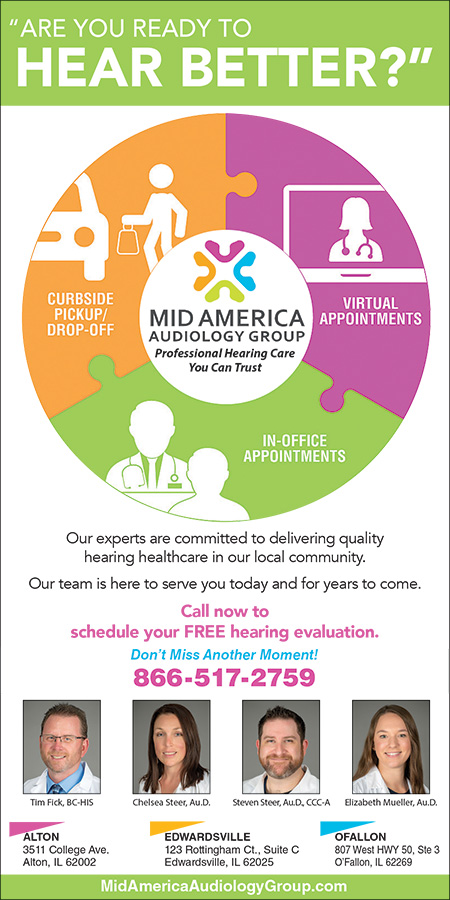What’s the difference between psoriatic and rheumatoid arthritis?

Psoriatic arthritis and rheumatoid arthritis are easy to mix up. Both cause pain, swelling and stiffness in the joints. They share some common symptoms, but they are distinct diseases. Getting a correct diagnosis will help your provider develop a more personalized treatment plan. People talk about arthritis as though it’s one disease. But the term can describe a wide variety of conditions like:
OSTEOARTHRITIS
Osteoarthritis is the most common form of arthritis. (If psoriatic arthritis and rheumatoid arthritis are siblings, think of osteoarthritis as their distant cousin.) Osteoarthritis is caused by wear and tear on the joints over time and is most common in older adults.
AUTOIMMUNE ARTHRITIS
This category is where you’ll find psoriatic arthritis and rheumatoid arthritis, both diseases that involve your immune system. They occur when your body’s immune system mistakenly attacks healthy tissues, including your joints.
Psoriatic arthritis and rheumatoid arthritis share several features. Both diseases cause joint pain and swelling, and in both cases, symptoms usually show up suddenly in episodes called flares, before eventually calming down again.
PSORIATIC ARTHRITIS BASICS
Psoriatic arthritis affects your joints and the places where tendons and ligaments attach to bones. Many people with psoriatic arthritis also have psoriasis, a disease that causes scaly, flaky patches of skin.
About 30 percent of people with psoriasis will develop psoriatic arthritis. Symptoms can develop at any age but usually show up between ages 35 and 55. It affects men and women equally. Arthritis can occur before the skin disease or with mild skin involvement, such as only nail or scalp psoriasis.
PSORIATIC ARTHRITIS SYMPTOMS
Common symptoms of psoriatic arthritis include:
- Pain and swelling in your joints (which may appear red and warm to the touch).
- Joint stiffness
- Tenderness or pain in your heel
- Psoriasis
- Fatigue
RHEUMATOID ARTHRITIS BASICS
Rheumatoid arthritis causes pain, swelling and stiffness in your joints. It usually affects the same joints on both sides of your body, such as both thumbs or both wrists. Sometimes, it also affects internal organs.
Rheumatoid arthritis is more than twice as common in women as in men. It can develop at any age but most often develops between ages 20 and 50.
RHEUMATOID ARTHRITIS SYMPTOMS
Common symptoms of rheumatoid arthritis include:
- Pain and swelling in your joints
- Joint stiffness
- Fatigue
- Low-grade fever
WHAT’S THE DIFFERENCE?
While symptoms of psoriatic arthritis and rheumatoid arthritis can overlap, there are some notable differences. Doctors look at several factors to determine whether your symptoms are psoriatic arthritis or rheumatoid arthritis.
- Family history – Researchers believe both psoriatic arthritis and rheumatoid arthritis are caused by a mix of genetics and environmental factors. Your doctor may ask if you have a history of psoriasis or if anyone in your family has psoriasis, psoriatic arthritis or rheumatoid arthritis.
- Blood tests and X-rays – Blood tests can help your doctor determine which type of arthritis you have. People with rheumatoid arthritis often have a protein called rheumatoid factor in their blood. People with psoriatic arthritis usually don’t.
Another test looks for CCP antibodies, sometimes called anti-CCP antibodies. These can be a sign of rheumatoid arthritis. X-ray images of psoriatic arthritis and rheumatoid arthritis can look similar. But since the diseases tend to affect different joints, X-rays can help pinpoint a diagnosis. The images can also reveal other differences between the diseases. In psoriatic arthritis, there is usually more inflammation in the spots where ligaments and tendons attach to bone. In rheumatoid arthritis, inflammation is more common in the joint lining.
Both psoriatic arthritis and rheumatoid arthritis are chronic diseases. They can’t be cured, but they can be managed. By working with your doctor to get the correct diagnosis, you can manage symptoms to feel your best.


